Valve gear
A valve spring has a tough job - especially at high speed. Not only does it have to lift its valve up very rapidly and of course, repeatedly, but it also has to lift the rocker. We cannot do anything about the valve (without resorting to titanium for the inlets) so what about the rocker? Reducing reciprocating weight makes life easier for the spring and will raise the engine speed point at which valve float occurs.
Remove a tappet screw from a Fulvia rocker and you will usually find that the threaded hole is not in the centre, meaning that there is a lump of useless metal flapping up and down at the end of the rocker where the reciprocating weight is greatest because of the length. Rockers can be dramatically lightened. There is no point in working hard on the pivot point where the rocker runs on the shaft, since there is no significant reciprocating effect there. And no metal should be removed that reduces the height of the rocker. Have a look at the rockers on the high-performance American V8 engine in the picture – the upper and lower edges are almost but not quite, sharp; there is no surplus metal and they are a good indicator of what a rocker should look like.
A very “hot” Chrysler “hemi” installed in an American dragster
source: Petersen’s Hot Rod series: "Cams, Valves, Exhaust Systems”
I spent a long time with Swiss files on my rockers reducing their weight. I then polished them with abrasive paper and had them shot-peened – I consider this essential for rockers that have been modified since they are forged components, and lightening and/or polishing removes the tough “skin” on the surface which must be replaced by peening (those who like the idea of polishing con-rods might care to consider this point).
Those with 1300 engines should try to find a set of 1600-type valve caps; these were drilled and thus lighter. Alternatively, titanium caps are available from Huib at Viva-Lancia.com.
Fulvia engines are old, the years do take their toll; this is very noticeable in the valve gear. Tappet screws become “mushroomed” at the ends, depressions appear in the tops of valves and needle tappets, and the hardened pads on the rockers that run on the camshafts also wear. Some of these problems can be addressed: the screws and rocker pads can be reground to shape, but I have no easy suggestion concerning the rocker shafts; these wear quite badly. They are made of material which is very hard or I should say, heat-treated for hardness. It is probably possible to have them chromed back to size and centreless-ground, which would be costly but probably not as expensive as having new ones made from scratch.
The only satisfactory solution for the valves is to replace them. In any case, the valves fitted to 1300s were not of the highest quality although quite satisfactory in normal use but perhaps not with unleaded fuel. Modern valves are generally made from 21/4N (I do not know the European Standard designation) an austenitic stainless steel specially developed for valves. The original exhaust valves fitted to 1600s were made of an exotic material, Nimonic 80, an alloy that has very little iron in its composition; it is mostly composed of chromium and nickel. Henry Wiggins & Co in England developed the “Nimonic” series of “Super Alloys” during the Second World War for use as turbine blades in jet engines. 21/4N is a perfectly good substitute and quite possibly better for exhaust valves. The first recorded use of this material for exhaust valves that I have been able to find was in the Coventry-Climax F1 V8 engine of 1962.
There are materials that are even superior to 21/4N but I cannot imagine that they are necessary in a Fulvia.
Because of the high contact loads applied to the tops of the valves by the small tappet screws, a very hard tip must be added. This is usually achieved by friction welding. The hardness should exceed 60 Rockwell “C”. The tips are usually made from some sort of high-grade tool steel.
Since the Fulvia uses bronze valve guides, it is not necessary that the valve stems be chromium-plated.

A set of valve guides prepared for a Fulvia.
Note the taper on the inlet guides to improve flow, whilst
The exhaust guides are left straight to help them cope with the heat
Series 1 Fulvias used valve guides that did not have valve stem oil seals and there is no provision for them, whilst Series 2 cars did. I imagine that the S1 guides were especially finely honed. The best material for guides is nickel-silicon bronze; one trade name for this material is “Colsibro” and at one time at Evolution Engineering we used to make our guides from Colsibro bar. Later for the Fulvias, we bought valve guides specified for the Mercedes-Benz 190 Cosworth 16V. These are perfect for the Fulvia, having a safety spring clip and being made from the correct type of bronze. However we had to machine them to accept the normal valve stem oil seals as the Mercedes-Benz ones were a different pattern.
Finally we used to modify Lancia 16V guides (see picture above). Once again they are the correct material and accept the oil seals. Incidentally do not use the seals normally supplied in the Fulvia gasket sets. Use Integrale or Thema ones or similar. These are made of silicone rubber and do not harden with age unlike those normally supplied. I never fit seals to the exhaust valve guides as I consider it unnecessary and a little oil is probably a good thing for such hard-working components.
Camshafts
The standard 1.3S/1.3HF/1.6HF camshaft (all the same) offers 56 degrees of overlap and duration of 274 degrees. In many engines of the period, this would have been considered a high performance specification for a road car - even a bit “wild”. I have found that in modified engines the original camshafts work very well indeed; various suppliers offer different Fulvia profiles but I would consider the camshafts the last thing to change in a development programme. For more information, see “Fulvia Thoughts 5” on this blog.
Next time, The Exhaust


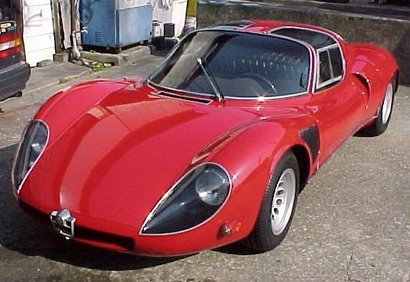
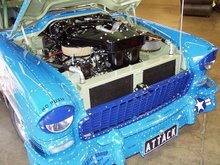
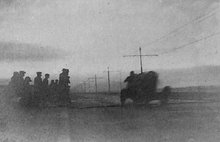

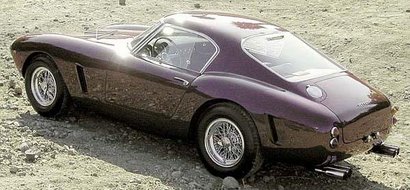
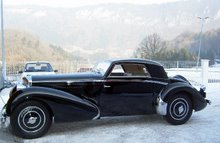
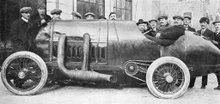


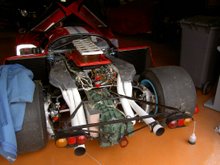

3 comments:
Dear paul, Do you have manufacturers of good replacement valves or even better an interchangelists. Containing information like: 1600 pilots modifying their engine can fit big valves of the Toyazda Matizdo 2200GXLSI or the Dodgemobile Tuaronda V8!
At the moment good quality valves in 1600 sizes or larger are nearly impossible to find.
Try G & S valves in England. They used to supply us at Evolution Engineering; they will make small quantities at a price but can make anything you want. Be sure to specify the hardest possible tips (they know all about this). There is an interesting website - I have lost the address but search on Google
Hi Paul, I'm in the process of increasing my 1600 HF to Gp 4 spec. my quest for information has brought me to your site. Can you tell me how I might get some information on the exhaust system you describe in your blog. Any advice on head mod's and cams would also be a great help.
Many thanks,
Ciaran.
(ciaran.geoghegan@gmail.com)
Ireland
Post a Comment